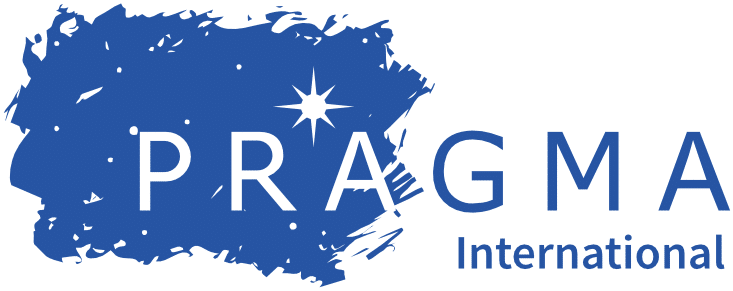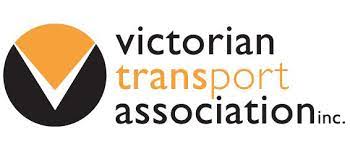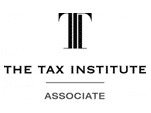In the midst of an ever-evolving regulatory landscape, you could be forgiven for missing important developments in workplace health and safety law. While we generally include safety updates in our quarterly Workplace Relations publications, given the rate of change in the WHS legal sphere, we have decided to publish a separate KHQ Safety Update. Our new Safety Updates will be centred around changes and relevant cases regarding safety and WHS laws in the workplace that all employers (and employees) should be alert to.
In our inaugural Safety Update, we cover some of the major WHS issues arising from the ongoing COVID-19 pandemic, and significant reforms set to make waves in the sexual harassment space. As always, if you have any questions or concerns, please contact us.
The workplace and vaccines
The COVID-19 vaccine program is an obvious hot topic, specifically regarding the question of whether employees can be directed by their employer to be vaccinated. The Fair Work Commission has recently dealt with this in its decision in Ms Bou-Jamie Barber v Goodstart Early Learning [2021] FWC 2156.
Goodstart had implemented an immunisation policy requiring all employees to receive the influenza vaccine, unless they had a valid medical condition preventing vaccination. The employee was a Lead Educator, and claimed she had a sensitive immune system, providing a medical certificate to support her claim to not being able to receive the vaccine. Goodstart considered that the medical certificate was not sufficient evidence to support an exemption, and the employee was terminated for failing to meet the inherent requirements of her role.
In summary, the Deputy President’s findings were that, given the childcare industry is highly regulated with safety being paramount, it was reasonable and lawful for a childcare provider to require flu vaccinations for employees who deal with children. Further, the Deputy President found the employee did not present valid medical evidence to be exempt from the vaccine.
Does this mean employers can direct employees to have COVID-19 vaccinations?
Whilst a relevant decision, it doesn’t provide a complete answer to the question of whether an employee can be directed to have the COVID-19 vaccine.
Apart from the Queensland Government public health COVID-19 Testing and Vaccination Requirements (Contact by Health Workers with Cases) Direction (mandating coronavirus vaccination for some workers working with people with diagnosed cases of COVID-19, and of individuals working in hospitals), no other state or territory government has issued public health orders enabling employers to require employees to be vaccinated against COVID-19.
Safe Work Australia has said that it’s unlikely compulsory vaccination will be reasonably practicable for each industry, and has set out factors for employers to consider on an ongoing basis, including:
- Will employees be exposed to the risk of infection as part of their work? For example, hotel quarantine workers or COVID-19 ward nurses.
- Do employees work with people who would be vulnerable to severe disease if they contract COVID-19?
- Do employees interact with large numbers of other people in the course of their employment that could contribute to a “super-spreading” event if the employee contracts COVID-19?
It must be said that the absence of legislative regulations or provisions making the vaccine mandatory tells against the capacity for an employer to direct an employee have the vaccine. However, we nonetheless note the implied term of an employment contract for employees to obey lawful and reasonable directions (see Woolworths Ltd v Brown (2005) 145 IR 285, at 293) which can be enforced.
An employer may have the right to issue a lawful and reasonable direction to workers to be vaccinated with the COVID-19 vaccine, particularly In respect of workers who work in high risk areas, eg front line health care workers in hospitals. However, it’s essential that businesses consider the reasons of any particular individual worker circumstances for refusing to vaccinate – for example, they have some form of medical vulnerability, an issue of conscience or apprehended risk that needs to be worked through. Each objection should be considered on a case by case basis and determined having regard to the particular worker’s circumstances and within a reasonable timeframe.
An employer must also consult with employees prior to the implementation of mandatory vaccination for COVID-19. To that end, it’s better to be cautious with objections in the “front end” rather than simply imposing your will and only discovering problems with particular employees in the backend.
Employer obligations
Having regard to statutory legal safety obligations, employers are required to eliminate or, if not practicable, minimise (so far as is reasonably practicable) the risk of workers and others being exposed to COVID-19 and vaccination should be considered as one way to do so in the context of a range of available and appropriate control measures.
To reduce risk of exposure to COVID-19 in the workplace, a business must:
- undertake a risk assessment which covers not only the risk of COVID transmission, but also the risks of taking the vaccine;
- consider the available control measures (including physical distancing, hygiene and regular cleaning and maintenance, ensuring workers do not attend work if they are unwell or infected with COVID-19, comply with any public health orders made by the relevant state and territory governments and how they will help manage the risks of COVID-19, including any available vaccines, taking into account available evidence;
- consult with workers and HSRs under WHS legislation and relevant enterprise agreements about COVID-19 and relevant control measures including the COVID-19 vaccine; and
- determine what control measures are reasonably practicable to implement in the workplace to minimise the risk.
Sexual harassment – relevant WHS considerations
The Federal Government has provided a “roadmap to respect” in response to Sex Discrimination Commissioner Kate Jenkins “Respect@Work: National Inquiry into Sexual Harassment in Australian Workplaces” Report (Jenkins Report), more than a year after its release.
The Jenkins Report included 55 recommendations on how to address workplace sexual harassment.
Throughout the Inquiry, the Commission heard of the need to shift from the current reactive, complaints-based approach, to one which requires positive actions from employers and a focus on prevention. The recommendations in the Jenkins Report are focused on this proactive approach.
The Jenkins Report noted that the Model WHS Act does not expressly prohibit sexual harassment. One of the report’s WHS recommendations is that WHS ministers agree to amend the model WHS Regulations to deal with psychological health, as recommended by the Boland Review (an independent review into the Model WHS laws, released in February 2019), and develop guidelines on sexual harassment with a view to informing the development of a code of practice on sexual harassment. Sexual harassment should be defined in accordance with the Sex Discrimination Act (Recommendation 35). The Commission acknowledges that this will require a cultural and institutional shift in a field that has historically focused on physical harm and risks.
The Federal Government stated in its response ‘A Roadmap for Respect: Preventing and Addressing Sexual Harassment in Australian Workplaces’ (released on 8 April 2021) that it has agreed to (in full, in-principal, or in part) or noted all the recommendations of the Jenkins Report. Further, the Government notes that Safe Work Australia has already taken steps to support businesses and workers to understand their rights and obligations by developing and publishing its national guidance material on preventing workplace sexual harassment under the model WHS laws. The guidance provides detailed information for ‘persons conducting a business or undertaking’ on practical ways to prevent workplace sexual harassment and how to respond to cases of harassment. It also includes specific information sheets to assist small businesses and workers to meet their WHS duties in relation to sexual harassment.
Jurisdictional WHS Ministers are scheduled to finalise the response to the Review of the model WHS laws at a meeting of Ministers in mid-2021. This will include consideration of amendments to the model WHS Regulations to deal with psychological health. In this context, a code of practice on managing psychosocial risks is currently being developed by Safe Work Australia, which is to cover sexual harassment in the workplace. A code of practice will help to increase awareness of the duty to manage psychosocial health and safety risks and improve compliance.
It is clear that whilst there is currently no express duty on employers prohibiting sexual harassment in the workplace in federal, state or territory WHS/OHS legislation, there is a primary duty to eliminate, or minimise (if not reasonably practicable to eliminate) the hazards and risks to the safety of workers and others which includes eliminating or minimising psychological harm from sexual harassment.
Businesses need to keep a close watch on state or territory specific regulatory developments in this area, including amendments to WHS regulations and new codes of practice.
Federal entry permits – union officials not to enter site without a valid permit
In a short, but important decision, the High Court refused the CFMMEU’s application for an extension of time to apply for special leave to appeal the decision of the Full Court of the Federal Court of Australia in the Bruce Highway Caloundra to Sunshine Upgrade Case.
The Australian Building and Construction Commission successfully sought an injunction in the Federal Court, preventing seven CFMMEU officials from entering the $812 million Bruce Highway upgrade site in Caloundra, Queensland, unless they held (and showed when requested) right of entry permits issued under the Fair Work Act.
The union and the officials claimed they didn’t need permits because they entered the site under section 81(3) of the Queensland WHS Act, which stated “a representative of a party to [a health and safety] issue may enter the workplace for the purpose of attending discussions with a view to resolving the issue”. They contended s81(3) was nothing more than a “facilitative” provision that did not confer a “right” on a representative to enter a site, meaning they weren’t exercising a “state or territory OHS right” requiring an entry permit within the meaning of the Fair Work Act.
The Full Court confirmed union officials cannot bypass right of entry requirements by attending a worksite under provisions for resolving work health and safety matters.
Union officials must hold a valid federal right of entry permit and must present it when asked to do so when entering a site under section 81(3) of the Work Health and Safety Act 2011 (Qld) (for the purpose of attending discussions with a view to resolving health and safety issues) or when exercising any other state or territory OHS right.
Danger of overriding safety mechanisms
Employers beware – are your employees bypassing safety systems, exposing them to the risk of serious injury?
Recently in Victoria, a company and its director were convicted and fined a combined penalty of $60,000 after a worker was injured by a robotic hoist. During an investigation, WorkSafe Victoria found that the interlocks on the gates in the area around the hoist had been bypassed, allowing employees to access points to be opened without shutting off the machines. The worker was crushed by a robotic hoist which resulted in serious back and leg injuries.
In another incident in South Australia, the company and its director were engaged to remove pine trees. The crane operating system required a load chart to be entered to allow the crane to configure how the trees should be lifted. The employee did not enter the correct load charge and attempted to override the “motion cut”, which stops certain crane operations if load limits are exceeded. This caused the crane to tip upwards from the rear and the boom fell forward onto two cars.
These recent prosecutions are a poignant reminder that modification to plant or equipment to deactivate and bypass a safety mechanism for productivity reasons, ease of access to clear machinery, faulty interlock safety mechanism etc, must not be condoned or overlooked at the risk of serious or fatal injuries, OHS breaches and convictions, and penalties. Employers should instruct and train employees on the importance of safety mechanisms and regularly check that safety systems are operational and have not been interfered with or bypassed.
Employee competency
Cleanaway Operations Pty Ltd was found guilty of 8 charges having breached its duty of care by failing to properly assess a new employee’s competency in driving a manual road tanker or control it on a downhill route.
The new employee had an unrestricted heavy vehicle licence and had been employed for 5 days when he lost control of the truck he was driving and collided with three cars. Two people died and another two were seriously injured, including the employee.
The Magistrate found that Cleanaway had failed in its duty of care to provide adequate training and supervision. Cleanaway had only assessed the employee in driving an automatic truck but had assigned him a manual truck the day of the incident. The Magistrate also found that Cleanaway failed to maintain a system of work that prevented the employee from driving without proper supervision until his competency to drive all vehicles he was required to drive was determined.
This prosecution case is a reminder to employers to:
- ensure new and current employees hold and maintain appropriate valid licences and permits required to perform their roles and the required tasks; and
- properly assess new employees’ competencies to do required tasks; and
- only assign employees to tasks which they are capable of after a thorough assessment having regard to the nature of the required tasks and the plant and equipment to be used; and
- ensure adequate training and supervision having regard to the tasks required, the risks involved and control measures in place and the level of competency of the employee concerned.
Labour hire licensing crackdown
Unlicensed labour hire providers and users of unlicensed labour hire providers and their directors have recently been handed hefty fines for breaching labour hire licensing laws.
Businesses that engage and have a turnover of labour hire providers need to ensure procedures are in place to check their labour hire providers are licensed under the relevant labour hire licensing laws which operate in Victoria, Queensland and South Australia.
This update was written by Andie Manolopoulos (Associate) and Gina Capasso (Principal Solicitor).
We trust our first Safety Brief is useful and of interest. If there are any particular areas or topics you would like us to cover in the future, please just let us know – we are keen to continue to provide you with updates on important safety developments relevant to your business.








